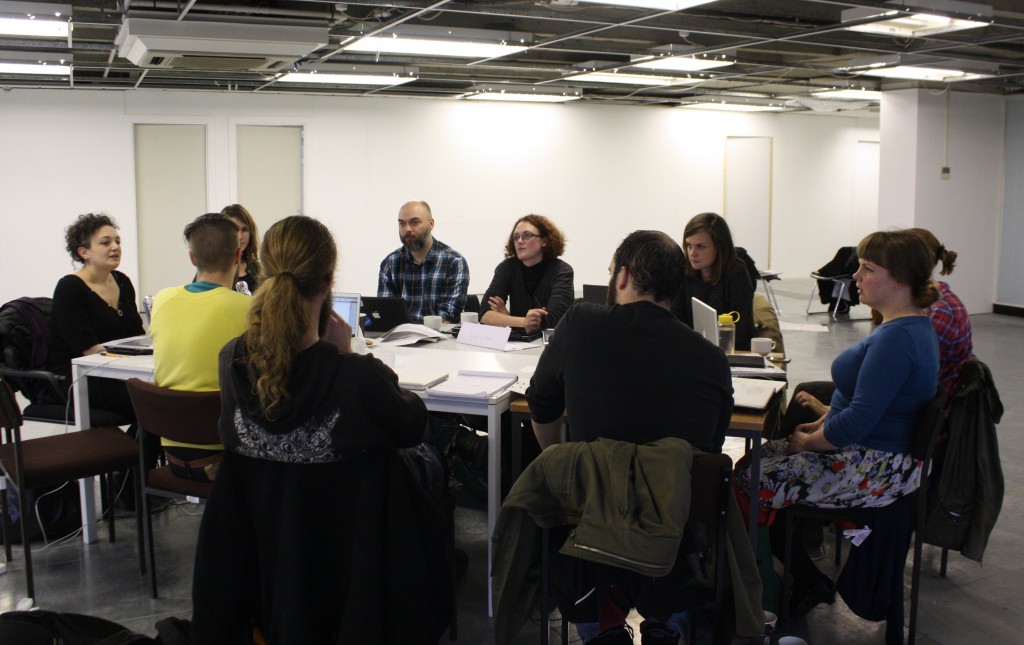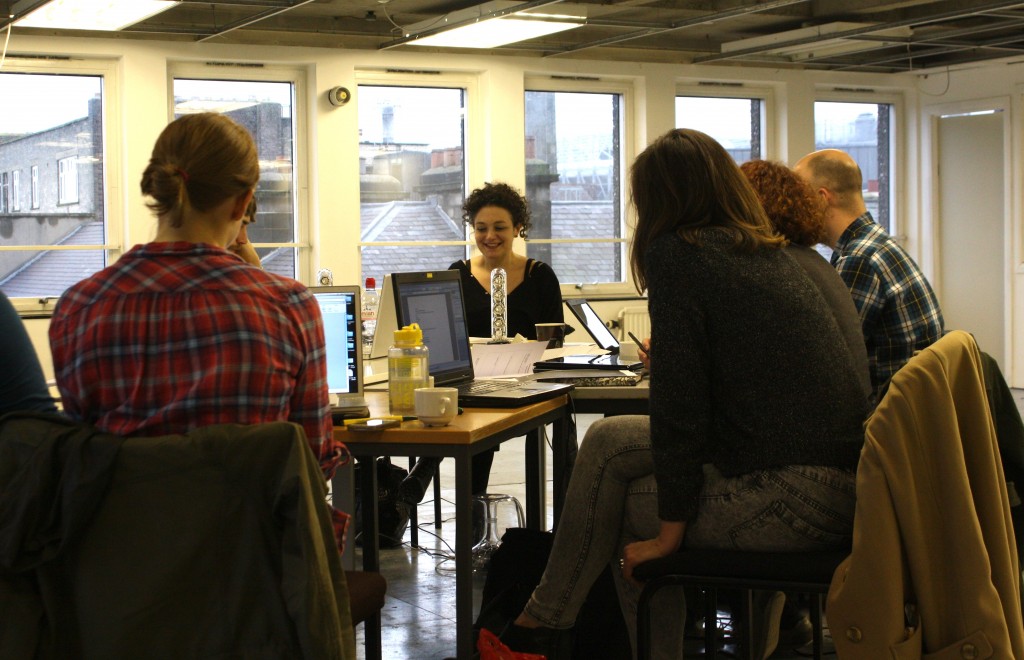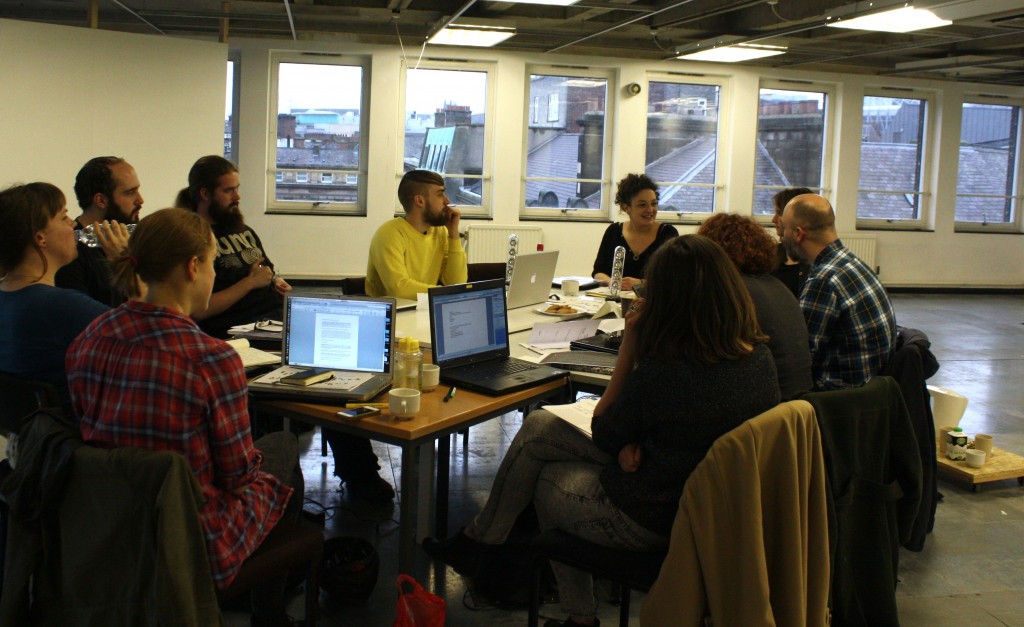[continued from A Diptych (1)]
2. The Next Day
An aural experience past, tangled with the forming and the informing of a memory: what is retained of it in writing? What does writing do to the aural memory?
Today I read a sentence by Paul Klee from 1928: ‘There are some problems to be posed, such as: the construction of the secret’. At the time he was most concerned with the interplay of painting and the feelings that move its making; with forming a visible surface while keeping hidden the fleeting element of sensation – a portion of experience which cannot be treated as a concluded whole but only in metamorphosis. The construction of each new work – what appears, what is given – is closely tied to the consideration of the hidden, ephemeral substance that prompts it.
I think of how I constructed the sound of that chainsaw in words. I told you of a sky slate grey and uniform, and of a verse from a poem attached to that sound. I didn’t tell you of the dust specks flying against the rays of a
polluted white light, and of the smell of freshly cut wood mixed with the nasty stench of sugar beet, that marked a visit to my grandparents in a suburban town in Southern Italy in the late seventies, when I first heard the sound of a chainsaw ever. I didn’t tell you of an early morning when I walked in a city along its old crumbling walls, watching faded halos and half-lit wall paintings in churches: that day I read for the first time the verse by Gerard Manley Hopkins; I wake and feel the fell of dark, not day, which was to be tied forever to a certain morning light and to the sound of a chainsaw from a street nearby. And yet my words around the chainsaw sound are informed by both moments: the light and sky I described are the same as those in the former memory, and from the latter I took black silhouettes of trees, clouds like gags, a slit of deep orange dawn light first opened on the cardboard surface of the sky, then splattered all around till its edges are soaked with red and there is no time to brush it away, to dilute it with the tears of a past.
The sound of a chainsaw cut into the fabric of my past and opened a slit into a near-audible growth of mutable material, that suddenly appeared alive and sounding out of the still and dumb reassurance of ‘what used to be’. How is such mutable material fixed into words?
In forming a memory of a certain sound through writing, the conventional need might arise for a ‘behind the scenes’ and a ‘before the sound’. A lot of ‘behind’ and ‘before’ in fact, canonically. I could not capture the behind and before of the chainsaw sound as such: I can tell what stayed with me as an impression, I can give space to the experiential texture of words, lights, movement attached to my words as they gradually shape that sound. Maybe I did not even want to capture that sound as such. Better to let it fade through time, then to begin and construct its secret as a palimpsest of memories and experiences scarred with other words, stories, descriptions of places and people; to let it emerge from layers and layers of varied matter, until it feels so close because it’s closer to my understanding of it now, not to the dead reassurance of its past.
As I stitch together my broken utterances and let the resulting off-centred construction clash with any concluded ideas of perfection and permanence, I realise that a distinctive pace holds each memory of a sound together: I can’t mask or disguise it as it takes shape. Is it an involvement with a secluded presence, a trick of the mind, a search for a sense belonging to a past that cannot be entirely manifested, affected? If shaping a sound in writing is arbitrary, nonetheless it demands to construct the arbitrariness with rigour: a rigour true to one’s own life. If it has to do with understanding, it does so literally by standing under the layered substance of experience – which is not authority, but attention. It carries the responsibility of making a shape. It is the scrupulous questioning and forming of a where – the space where I choose to be every other day in writing after listening: a space that veils and reveals its internal cohesion in the making.
I hear the sound of the chainsaw in my mind: in my recollections. Its shrill monotonous hum slits a sharp line over the timeline of a time past; it opens time up against the four walls around. The afterlife of a sound ties in modes of listening, of being and having been, of addressing and affecting change. To write after listening is to create a space by hints and to summon other voices. To write after listening is to caress aural experiences first, only to grasp them firmly later: to hold a soft cloth in one hand, the hatchet in the other. To wrap up sounds in stories, in tales of walks and wonders, in facts and bits from the past – layers of memories of other words – and then to slit those memories open, to shred and re-collect them today.
I want to look at all this closer. I want to write of the slow absorption of absence and the sudden cuts in it. Of certain recurring cadenzas and twists of phrase, that rise from what is not there but resonates. I want to write of being removed, of being in that void and then filling it – of memories that seem aural at first but that in fact enwrap the whole being: not the ‘very’ experiences of sounds but their afterimages through stories, other books and tales of walks and wonders, bits shredded from the past.
Each sound-memory moves on. I write it: I embrace it, I slit my understanding. Two movements appear in writing sound: the embracing and the slitting. Understanding what is made to believe as real, is only possible after a cut, as Pier Paolo Pasolini showed in his illuminating essay Observations on the Long Take. Only when the ‘chaos of possibilities, a search for relations among discontinuous meanings’ is given shape and is organised, does it generate meaning. Until then, it is an untranslatable chaos of possibilities.
The history of each aural memory is a rolling tape of possibilities that you hammer down with the singular bolts and studs of your own making, molded and carved through the years. A glimpse of thoughts profound and far away covers words with a veil of remoteness, yet you cannot halt the urgency and rhythm of today: quick, it touches the border of real.
It has to end here: between the fading of words out of a silenced aural memory and the withdrawal into another silence, between the emergence and the withdrawing, the embrace and the slit. Words can trigger a shock of recognition through the prism of a reported experience of sound, reflected on today: not searching for any conclusive sense, but thinking of how each where shapes aural memories. Think of the slit and the construction of the secret, question the edges of each where.
– –
Reading list:
– Gerard Manley Hopkins, ‘I wake and feel the fell of dark, not day…’, in Poems and Prose, London: Penguin Books, 1953p. 62
– Paul Klee, ‘Recherches exactes dans le domaine de l’art’, in Bauhaus, 1928
– Pier Paolo Pasolini, ‘Observations on the Long Take’ (1967), trans. Norman MacAfee and Craig Owens, in October, vol. 13, (Summer, 1980), pp. 3-6


